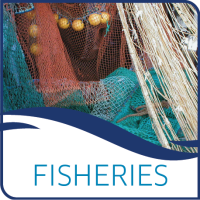Scottish Marine and Freshwater Science Vol 14 No 05
This report presents the results of Scottish regional brown crab (Cancer pagurus), velvet crab (Necora puber) and lobster (Homarus gammarus) stock assessments carried out by Marine Scotland Science (MSS) for the period 2016-2019.
Data and Resources
- Table 1 – Crab and lobster species landed into Scotland by UK vessels between 2009 and 2020.csv
Table 1 – Crab and lobster species landed into Scotland by UK vessels...
Preview Download - Table 2 Minimum landing size (MLS) regulations in Scotland for commercially important crab and lobster species csv
Table 2
Preview Download
Minimum landing size (MLS) regulations in Scotland for... - Table 3 - MSS Market sampling statistics - Brown Crab 2016-2019csv
Table 3 - MSS Market sampling statistics
Preview Download
Number of animals measured,... - Table 5 - MSS Market sampling statistics - Lobster 2016-2019csv
Table 5 - MSS Market sampling statistics
Preview Download
Number of animals measured,... - Table 6 – Biological parameters used in stock assessment for brown crab, velvet crab and lobster.csv
Table 6 – Biological parameters used in stock assessment for brown crab,...
Preview Download - Table 7 - Size at 50% maturity Lmat (mm), for brown crab, velvet crab and lobster. csv
Table 7 - Size at 50% maturity
Preview Download
Lmat (mm), for brown crab, velvet crab... - Table 8 – Percentage of total landings into Scotland of brown crab 2016–2020, by assessment area.csv
Table 8 – Percentage of total landings into Scotland of brown crab 2016–2020...
Preview Download - Table 9 – Percentage of total landings into Scotland of velvet crab 2016–2020, by assessment area. csv
Table 9 – Percentage of total landings into Scotland of velvet crab 2016–...
Preview Download - Table 10 – Percentage of total landings into Scotland of lobster 2016–2020, by assessment area.csv
Table 10 – Percentage of total landings into Scotland of lobster 2016–2020,...
Preview Download - Table 11 – Brown crab. Size-based indicatorscsv
Table 11 – Brown crab. Size-based indicators as a ratio between mean length...
Preview Download - Table 12 – Velvet crab. Size-based indicatorscsv
Table 12 – Velvet crab. Size-based indicators as a ratio between mean length...
Preview Download - Table 13 – Lobster. Size-based indicatorscsv
Table 13 – Lobster. Size-based indicators as a ratio between mean length, L̅...
Preview Download - Table 14 – Brown crab fishing mortality (Fbar) from Length Cohort Analysis (2016-19) in relation to FMSY.csv
Table 14 – Brown crab fishing mortality (Fbar) from Length Cohort Analysis (...
Preview Download - Table 15 - Velvet crab fishing mortality (Fbar) from Length Cohort Analysis (2016-19) in relation to FMSY.csv
Table 15 - Velvet crab fishing mortality (Fbar) from Length Cohort Analysis...
Preview Download - Table 16 - Lobster fishing mortality (Fbar) from Length Cohort Analysis (2016-19) in relation to FMSY.csv
Table 16 - Lobster fishing mortality (Fbar) from Length Cohort Analysis (...
Preview Download - Report: Crab and Lobster Fisheries in Scotland: Results of Stock Assessments 2016-2019html
Access the formatted report on the Scottish Government main website
Go to resource
| Field | Value |
|---|---|
| Publisher | |
| Modified | 2023-03-21 |
| Release Date | 2023-03-16 |
| Identifier | 15358bc9-9c13-4170-ba53-6053d637163f |
| Spatial / Geographical Coverage Area | POLYGON ((-0.263671875 56.140958986939, -4.658203125 53.925368265737, -9.052734375 56.820423812448, -9.66796875 58.420415008112, -9.31640625 60.126459759547, 0 61.413807956633, 0.52734375 58.786708622911)) |
| Temporal Coverage | 2016-01-01 to 2020-12-31 |
| Language | English (United Kingdom) |
| License | UK Open Government Licence (OGL) |
| Data Dictionary | The Scottish creel fisheries are long established and tend to be mixed species fisheries with brown crab, velvet crab and lobster as the main target species. The importance of each species varies regionally and in relation to season and market demand. The landings of the combined fishery into Scotland in 2020 were 9,000 tonnes with a first-sale value of £31M. This report presents the results of Scottish regional brown crab (Cancer pagurus), velvet crab (Necora puber) and lobster (Homarus gammarus) stock assessments carried out by Marine Scotland Science (MSS) based on length cohort analyses (LCAs) applied to commercial length frequency data for the period 2016-19. The stock assessments presented are conducted on a regional basis for the crab and lobster management areas in Scottish waters, with males and females assessed separately. The methodologies used include length-based methods, size indicators and analysis of survey data, providing stock status for stocks with available data. Analysis of trawl and dredge survey data for brown crab in the east and west coast indicates that abundance and recruitment (the number of young crabs entering the adult population annually) show a general increase from 2008 until the 2013-2016 period and a decline in recent years. The decline in survey catch rates coincides with a period a declining brown crab landings from 2016. There are no survey data available for velvet crab and European lobsters. The stock assessment results in this report for the three species are based on estimates of fishing mortality in relation to a reference point for each stock, to infer whether or not a stock is fished above the level that would in theory result in maximum sustainable yield (in the long term). The results of assessments for the period 2016-19 indicated that in the majority of the assessment areas, brown crab, velvet crab and lobster in Scotland were fished close to or above fishery reference points. To ensure sustainability of these fisheries, it is recommended that effort/fishing mortality should be reduced in those stocks for which fishing mortality is estimated to be above the sustainable fishing mortality (FMSY). |
| Contact Name | Marine Scotland |
| Contact Email | |
| Public Access Level | Public |


